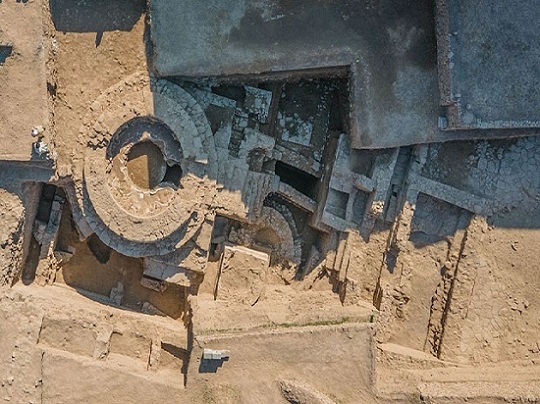Oldest Buddhist apsidal temple of country found in Swat
A team of Pakistani and Italian archaeologists have found a 2300-year-old Apsidal temple of the Buddhist period and a treasure in the Bazira city of Barikot tehsil, Swat district in Pakistan.


The location of these artefacts is in the Khyber Pakhtunkhwa province. Know more about the discovery below.
Take a look at the helicopter view of the site found
A senior official said, “The Pakistani and Italian archaeologists during joint excavations at a historic site have discovered over 2,300 years old Apsidal temple of the Buddhist period in north-west Pakistan besides recovering other precious artefacts.

The temple discovered in Swat is even older than the Temples discovered in Taxila remains of Pakistan.”
Professor Luca said, “This is an astonishingly important discovery as it attests to a new architectural shape of Buddhist structure in Gandhara.
We only have one other example of the apsidal temple in a city at Sirkap, Taxila. However, the apsidal temple of Bazira is so far the earliest example of this architecture in Pakistan.”
As per the archaeologists, the temple is almost 2300 years old and along with that 2700 other Buddhist period coins, rings, pots and other artefacts worth millions have been recovered.
An interesting discovery is of something written in the Kharosthi language of the King of Greece, Menander
What is the Inference derived from the discovery?
The head of the Italian archaeological mission in Pakistan Dr Luca Maria Oliver informed that this discovery of the Temple of the Buddhist period is approving of the fact that Swat is home to the oldest archaeological remains than Taxila.
There are many more recoveries expected from this zone of Brazira city. Dr Abdus Samad, the director of museum and archaeology, said, “Bazira city in Barikot Swat is older than Taxila remains too.”

The discovery also proves that Swat had been a sacred place for six to seven religions.
Dr Samad has informed the media that there were 14 archaeological sites under section 4 where the excavation process was carried out.

The Italian ambassador to Pakistan Andreas Ferrarese informed the media, “The Italian archaeological mission in collaboration with Khyber Pakhtunkhwa archaeological department has been protecting and excavating archaeological sites for the last seventy years in Pakistan.”

The site was discovered by archaeologists of Ca’ Foscari University and the Italian Archaeological Mission in collaboration with the provincial department of archaeology and museums.
As per Prof Luca M Olivieri who is the director of Italian Mission, “it is possible to date the foundation of the Buddhist sacred structure to the Mauryan period, certainly to the 3rd century BC.”
